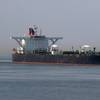By Larry Pearson
As noted elsewhere in this issue, evidence abounds of a pickup in oil and gas exploration, drilling and production.
The latest example is the delivery of a seismic vessel to a company that was incorporated in 2003 specifically for geophysical work. The company is Global Geophysical Services, Inc., of Houston, Texas.
The company went to Geo Shipyard, New Iberia, La. for a 70 x 22-ft. catamaran-style seismic source vessel. "In the past, we specialized in seismic boats and our company name is derived from our concentration on geophysical vessels," said David LeCompte, president of the company.
The vessel is equipped with a pair of large compressors enabling it to operate air guns that gather seismic data from the Gulf of Mexico.
"This source vessel is unique in that it has a lot of source energy, backed by large compressors all packaged on a shallow draft catamaran-style vessel," said Richard Degner, president and CEO of Global Geophysical.
The driving force behind the development of this vessel is the lure of finding large deposits of gas in shallow water in the Gulf of Mexico. "The great success many companies are experiencing in the deep water of the Gulf of Mexico has led to searching for large gas deposits in shallow water but at much greater depths in the earth," Degner said.
"Years ago exploration leases were down to 15,000 feet, but now there is a lot of activity in leases permitting drilling to 30,000 feet and that has the potential of revitalizing the shallow water Gulf of Mexico market," Degner believes.
"To drill to those depths, companies need very high resolution data and larger source energy so that signal to noise ratios and wave reflections at these great depths are still adequate to provide quality seismic data," Degner added.
"Technology has significantly reduced the cost of obtaining seismic data," Degner said. "The electronics have become much more reliable, more compact, use less energy and are a lot lighter in weight," Degner said.
Global Geophysical will use the James H. Scott as the "source" vessel in the search for gas at these extreme depths. A source vessel uses air guns in an array towed behind the boat to send sound waves deep into the bottom of the Gulf of Mexico. A second vessel maps the sound wave reflections to provide a "picture' of the geology of the area that may contain gas deposits. The towed array travels at a depth consistent with the information that is being gathered.
Geo Shipyard built the James H. Scott from Marine aluminum. It is powered by a pair of Luggar 600 hp engines driving Nibral propellers through ZF gears A pair of Northern Lights 40 kW gensets provide ship's power. Speed is 11 knots. Each catamaran hull has a main engine, gear, shaft, propeller and genset.
At the heart of the vessel are two NCA compressors delivering 600 cfm of air at 2000 psi to operate the air guns. Typically, the towed array uses 3-4 "strings" with several air guns per string.
Seismic work can often last for several days. The James H. Scott has two staterooms with six bunks (one four person room and one two person room) for the crew operating the vessel and the towed array. A head is located in the hull as well with a toilet, shower and sink.
The vessel also has a small galley in the pilothouse as well as the control and navigation stations.
Fuel capacity for the James H. Scott is 5,000 gallons with tanks for 200 gallons each of black and potable water. A 180 gallon per day water maker replenishes the potable water tank for crew consumption.
Sponsored Content
Chris-Marine’s solutions help to prolong engine lifetime

Subscribe for
Maritime Reporter E-News
Maritime Reporter E-News is the maritime industry's largest circulation and most authoritative ENews Service, delivered to your Email five times per week










